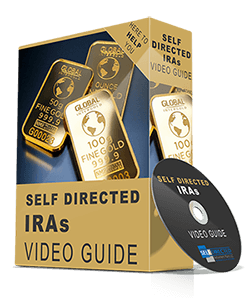The Roth IRA conversion is one strategy that has received much attention as a financial manoeuvre to maximize resources. It provides a unique combination of tax benefits and long-term flexibility that can significantly influence your retirement portfolio. Do you know what a Roth IRA conversion is? If not, you’ve come to the correct spot!
This blog post covers all you need to know about Roth IRA conversions. This includes the rules, benefits, downsides, how to accomplish it, and even tax suggestions. So, let’s get started!
What Is a Roth IRA Conversion?
The process of converting funds from a regular IRA, such as a SIMPLE IRA or SEP, to a Roth IRA is called a Roth IRA conversion. By doing so, you can enjoy a major tax advantage and financial flexibility.
ROTH IRA Conversion Rules
Let’s break down the conversion process and help you make informed decisions about your financial future.
- Straightforward Rollover
A direct rollover is one method for converting your regular IRA to a Roth IRA. This entails immediately moving cash from your traditional IRA to the Roth IRA custodian. It’s a simple procedure that allows you to avoid any tax implications. - Transfer From Trustee to Trustee
Like a direct rollover, a trustee-to-trustee transfer involves shifting assets directly from the financial institution holding your conventional IRA to a Roth account. This strategy ensures that the funds never come to you, avoiding potential tax liabilities. - Indirect/60 Days Rollover
The 60-day rollover, also known as an indirect rollover, allows you to withdraw money from your conventional IRA and deposit it in a Roth IRA within 60 days. You may suffer penalty and tax consequences if you don’t execute the transfer within this time.
Pros of Roth Conversion
Now that you know the basic rules of a Roth IRA conversion, let’s explore the advantages it offers:
- Tax-Free Withdrawals: Unlike regular IRAs, Roth IRA growth and withdrawals are tax-free after you pay the conversion tax. This implies you may live off your retirement assets without worrying about paying taxes on the distributions. However, you must cross the 5-year threshold and be 59 ½ years old.
- No Required Minimum Distributions (RMDs): Roth IRAs do not require obligatory distributions at any age. This freedom allows you to leave your money to grow for as long as you wish without being obliged to extract it.
- Tax Diversification: You may establish a tax-diversified retirement portfolio by converting a part of your regular IRA to a Roth IRA. This can be useful in retirement since you can pick which account to withdraw from, depending on your tax position.
The Drawbacks of Roth Conversion
While Roth IRA conversions provide significant advantages, it is vital to consider the following disadvantages:
- Conversion Taxes: When you convert your conventional IRA to a Roth IRA, you must pay taxes on the amount transferred. This can result in a substantial tax charge, particularly if you convert considerable cash.
- Tax on Social Security: If you currently receive Social Security, the tax you must pay depends on your income. And your taxable income may increase due to conversion. As a result, a portion of your Social Security and other benefits might be taxed.
- Uncertain Future Tax Rates: Converting to a Roth IRA implies wagering on higher tax rates in the future. However, this may not always be the case.
- Higher Monthly Medicare Premiums: Your Medicare Part B and Part D premiums increase with the increase in your taxable income from the previous two years. Thus, changing to a Roth IRA may result in higher Medicare premiums.
How to Convert a Roth IRA?
If you choose to convert to a Roth IRA, these are the 2 simple steps to take:
- Complete the Paperwork: Notify your conventional IRA custodian of your intention to convert to a Roth IRA. They will provide the documents you need to start the procedure. If you don’t have an IRA account, you need to open it first. Similarly, you can open a new ROTH IRA account during conversion if you don’t have one.
- Pay Taxes on Converted Amount: Once the conversion is complete, you must declare the converted amount on your tax return for the year of conversion as taxable income. For precise advice, consult with a financial specialist.
How to Avoid Taxes on a Roth IRA Conversion?
Let’s answer the most daunting question in your mind – “How do I avoid taxes on a ROTH IRA conversion”? While you can’t wholly avoid taxes, there are strategies to minimize the tax impact. They are:
- Convert in Lower-income Years: Consider converting when you are in a lower tax bracket, such as during a year of reduced income or retirement.
- Spread Out the Conversion: Instead of converting your total traditional IRA value all at once, consider spreading it out over several years. This might assist you in better managing your tax liability.
- Use Deductions: Investigate any possible deductions that might be used to offset the taxes owing on the conversion.
The world of Roth IRA conversions is complicated, but you don’t have to do it alone. If you need help, our team of specialists is here to help.
Contact us now to be sure you are making the best choices for your retirement funds.
Need assistance organizing your finances?
FAQs
Is a Roth conversion beneficial?
Converting to a Roth IRA is a wise decision. It enables you to take tax-free and flexible withdrawals in retirement. However, you should examine the prospective tax effects and your financial circumstances before deciding.
How much tax do I pay to convert my traditional IRA to a Roth IRA?
The amount of tax you pay on a Roth conversion is determined by various factors, including your income, tax bracket, and the amount. The converted sum is generally recognized as taxable income in the year of conversion.
Is there a limit to Roth Ira conversions in terms of amount?
No. There is no maximum amount that can be converted from a regular IRA to a Roth IRA.
What happens when you convert a traditional IRA to a Roth IRA?
When you convert to a Roth IRA, your conventional IRA funds are transferred to your Roth account. This implies that you will no longer have to pay taxes on qualifying Roth IRA withdrawals in the future.
Is there a penalty if you convert your IRA to a Roth IRA?
There is no penalty for changing from a traditional IRA to a Roth IRA. However, if you remove assets from a Roth IRA within 5 years after the conversion or before reaching the age of 59 ½, you may face early withdrawal penalties.
I have a SIMPLE IRA. What information do I require?
Before converting to a Roth IRA, you must generally wait at least two years from your initial SIMPLE IRA contribution date. Furthermore, employer contributions to your SIMPLE IRA made in the two years preceding the conversion may be subject to extra taxes if converted.
Can an inherited IRA or qualified retirement plan be converted to a Roth IRA?
Inherited IRAs and eligible retirement plans like 401(k)s cannot be converted immediately into a Roth IRA. However, subject to relevant tax laws, you may be able to roll these assets into a regular IRA and subsequently convert the traditional IRA to a Roth IRA.
Is there a conversion deadline?
There is no set time limit for converting to a Roth IRA. In general, you can convert at any moment.
Who is qualified for a Roth IRA conversion?
Anyone with a regular IRA or a qualifying retirement plan, such as a 401(k), can generally convert to a Roth IRA.
Is there an age limit for converting to a Roth IRA?
Converting to a Roth IRA has no age limits. If you fulfill the qualifying requirements, you can convert to a Roth IRA at any age.
Got More Questions?



